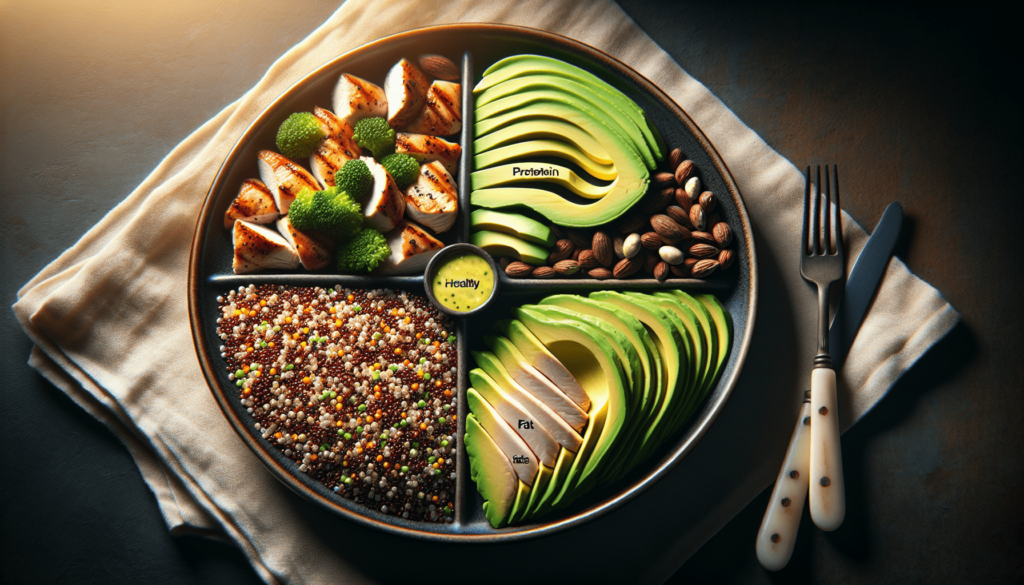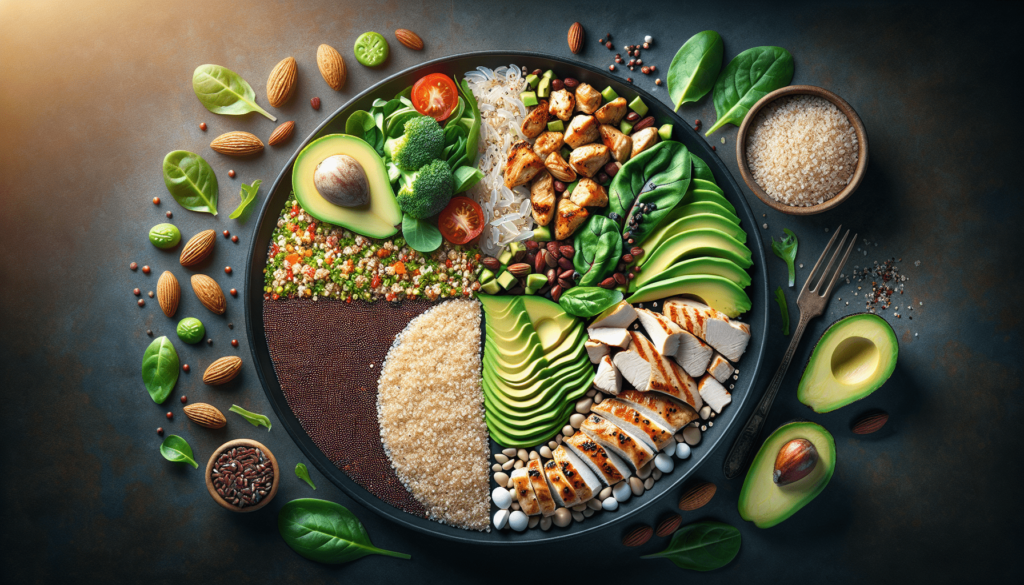Have you ever found yourself staring at a menu, trying to decode what exactly is hiding behind the fancy names and calorie counts? What on earth are “macronutrients,” and why do they sound like an alien species sending encoded nutritional messages through your protein bar? Well, sit tight, grab a carrot stick (or a cookie, I don’t judge), and let’s embark on this food-nomenclature adventure together.
What Are Macronutrients? (And Do They Come in a Fun Size?)
Let’s lay down some culinary truth. Macronutrients aren’t space aliens, though that would make for inarguably more exciting lunch hours. They are, in fact, the nutrients you need in larger amounts for your daily bodily functions and overall existence. Think of them like the Beyoncé of your dietary world—essential, irreplaceable, and when in proper ratios, capable of turning the otherwise mundane into a show-stopping extravaganza.
Macronutrients are broadly classified into three categories: carbohydrates, proteins, and fats. To clear up any scandalous headlines, none of these are villainous on their own. When mixed in a harmonious symphony, they can provide the nutritious backup vocals your body needs.
Carbohydrates: The Life of the Party
Carbs are to food what sequins are to disco balls—they add the sparkle. Here’s the need-to-know: carbohydrates are your body’s main source of fuel. Think bread, pasta, rice—staples that often find themselves contoured into your beautifully drawn and perpetually revisited food pyramid. Yes, carbs come in two fabulous forms:
-
Simple Carbohydrates: These are your quick energy boosters, often found in fruits, milk, and sweets. They provide energy fast, but much like a caffeine rush, they can bow out quickly, leaving you with a craving for more.
-
Complex Carbohydrates: Here’s where the real star power lies—think whole grains, beans, and vegetables. These provide sustained energy and include fiber, which is like a gentle superhero for your digestive system.
Proteins: The Bodybuilder
Meet protein, your body’s personal construction crew. Proteins are essential for building and repairing tissues, making enzymes, hormones, and other crucial chemicals. They are like the bricks of a building, holding everything together while also hosting a tiny disco dance in every cell you’ve got.
Proteins are found in:
- Animal-based Sources: Meat, fish, eggs, and dairy. The ‘Arnold Schwarzenegger’ of proteins, if you will.
- Plant-based Sources: Lentils, beans, nuts, and tofu. They do the same job with arguably more flair, given the added bonus of fiber, minerals, and vitamins.
What’s humorous about protein? It can give you flatulence if ungracefully consumed or if your body isn’t acting like a suave dinner guest at the digestion party.
Fats: The Misunderstood Nutrient
Fats often get a bad rap. Imagine them as the misunderstood rebels of the dietary icons—they’ve got leather jackets but are secretly quite sensitive. Fats are essential for hormone production, protecting your organs, and they help you absorb those flashy vitamins you love popping into your system.
Fats can be categorized into:
- Saturated Fats: Found in butter, cheese, and red meat. Think of these as the indulgent ones—best in moderation.
- Unsaturated Fats: Found in olive oil, avocados, and fish. These are the friendly, ‘bring a dish to pass’ types.
- Trans Fats: The sneaky villains, often present in processed foods. Always read the labels, like your English teacher warned you.
The Role of Macronutrients in Your Body (Or How Not to Breathe Fire)
Understanding macronutrients is a bit like trying to follow a soap opera; an adventure in deciphering who’s who and why they all seem vital to the plot. Each macronutrient plays its own role, and without them, the storyline of your body’s health can get more tedious than a delayed flight with infomercial reruns.
Carbohydrates: Not Just for Bread Lovers
Without carbs, your body might end up feeling like a car in need of the correct fuel. In simple terms, they provide energy and help to regulate blood glucose. They also play a crucial role in sparing protein for its building tasks and preventing the rather boring use of proteins and fats solely for energy. Eating the right amount can keep you energetic without needing a constant java-fix.
Protein: The Silent Overachiever
Protein is essential for not just body-building gym conversations but also in what’s aptly termed as “protein synthesis” – basically the body’s way of patting itself on the back for growth and repair. Whether you’re sprinting up the stairs or simply trying to knit your first sweater, protein plays a critical role in ensuring muscle and tissue upkeep.
Fats: Your Body’s Cushy Sofa
Contrary to popular belief, fats are not trying to sabotage your prom. They’re helping you store energy, assisting in cell growth, protecting organs, and regulating body temperatures. Think of them as the snuggly Ugg boots of your internal systems—they may divide opinion, but the warmth paradigm is undeniable.

The Balancing Act: Getting Your Macros Right
Now that we’ve gossiped about our subjects adequately, let’s address this head-on: how do you juggle these nutrients without turning your meal plans into an overly ambitious festival menu?
The Mathlete’s Guide: Counting Macros
Counting macros can sound less like a culinary adventure and more like a daunting math problem your gym teacher might have thrown at you in algebra class. The key is balance and understanding your needs. Here are some broad guidelines you might want to consider:
| Macronutrient | Percentage of Total Daily Calories |
|---|---|
| Carbohydrates | 45-65% |
| Proteins | 10-35% |
| Fats | 20-35% |
These proportions can vary based on individual health goals, such as weight loss, muscle gain, or even general wellness. Consulting a dietitian might prevent an existential crisis at the salad bar.
Meal Planning: Gracing the Table
Balance doesn’t just mean eating all types of macronutrients but also ensuring they’re adequate and diverse in sources. Incorporate different colors and textures—lest your meals resemble a monochrome art film with a bass-heavy soundtrack.
Think lean meats, whole grains, vibrant veggies, and some guilty pleasures now and then. Remember: a cupcake here and there will not overthrow your fabulous dietary rock concert; it might just add a fun saxophone solo.
Why You Should Care: The Bottom Line on Macros
By now, you might be feigning polite interest but internally questioning if understanding macronutrients is worth the party trick potential. But trust me, being aware of your body’s dietary needs is not just fodder for water cooler discussions; it’s like having backstage passes to your body’s all-access wellness concert.
Weight Management and Macronutrients
Your macros directly influence how you lose, gain, or maintain weight. It’s like finding the Goldilocks zone of not too much and not too little, but juuust right! This isn’t about strict rules, more about understanding the fluctuations that work for you while maintaining both jean size and joie de vivre.
Sports Performance: The Impressive Game Stats
Athletes, or those of us chasing the dream of jogging without gasping like we’ve been cast as extras in a horror movie, need to understand their energy requirements to optimize performance. Proper macro distribution can aid recovery, improve stamina, and prevent injuries. In essence, less Tripping Over/ Dismal Gym Equinox, more Winning in Life/Game Time Fierce.

Final Thoughts: Macronutrients, Your New Best Friends
Well, dear friend, by now you should feel like you’ve waded through the informational swamp and come out the other side with less confusion and more equipped than a beekeeper facing a small army of rogue wasps. Macronutrients are not the intimidating dinner guest you thought they were; they might just be your trusty confidantes ready to harmonize with you on your health journey.
Remember to balance the food types, enjoy the occasional detour, and most importantly, always make room for joy on your plate. Now, go out there and whip up a meal knowing you’re not just feeding your body but crafting a delicious ode to your well-being. And possibly, after all that macro-decrypting, take a well-deserved cheese break. Just don’t open a restaurant called “Macro’s Mojo”—it might backfire faster than a souffle in a microwave.
